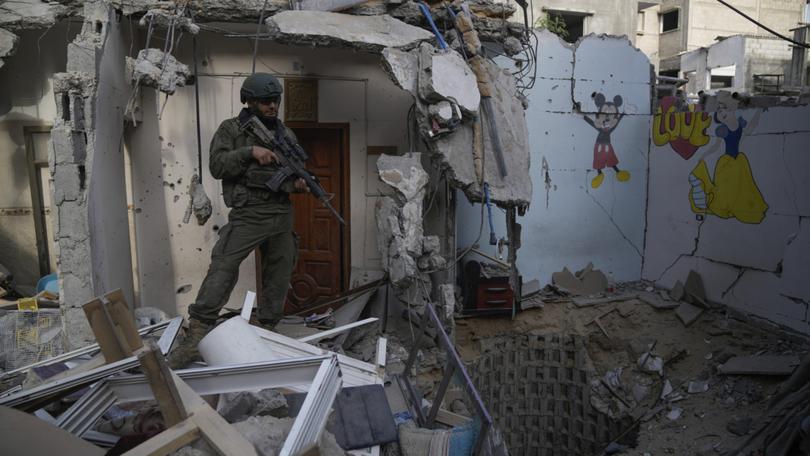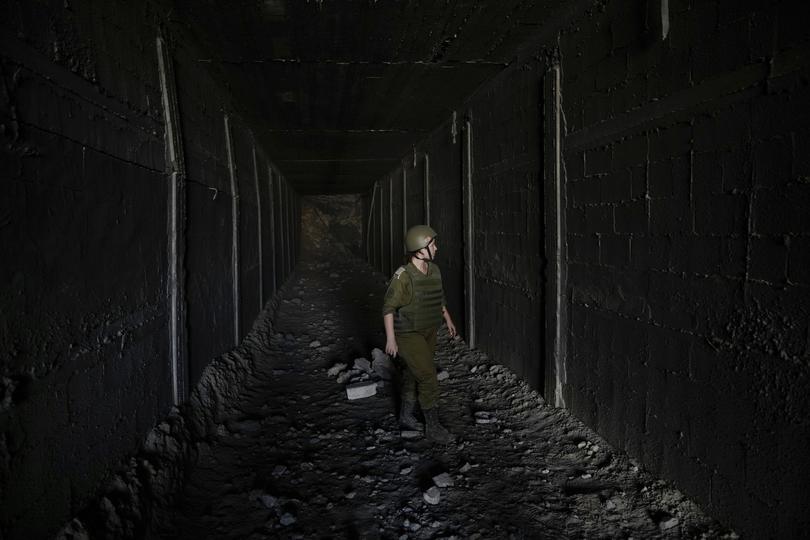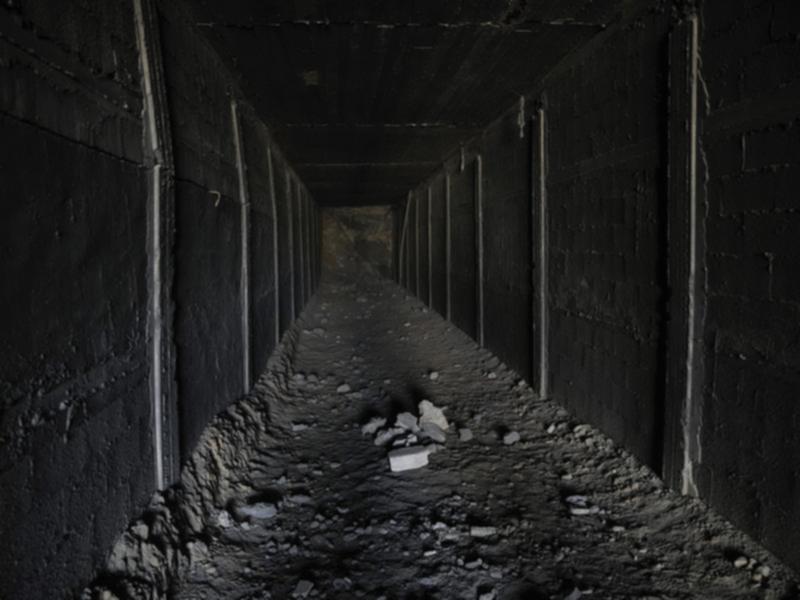Middle East: Israeli army shows reporters ‘maze of tunnels’ in southern Gaza

The Israeli army has taken reporters to tunnels uncovered by troops in southern Gaza, including the entrance to the underground chamber where the bodies of six Israeli hostages killed by Hamas were recovered.
The military did not allow reporters into the tunnel, in the Tel al-Sultan area of Rafah for security reasons.
But it has released footage showing a cramped and airless passage it said was some 20m below ground where it said the hostages had been held possibly for weeks.
Sign up to The Nightly's newsletters.
Get the first look at the digital newspaper, curated daily stories and breaking headlines delivered to your inbox.
By continuing you agree to our Terms and Privacy Policy.“There is a complete maze of tunnels here in Tel al-Sultan,” Israeli military spokesman Daniel Hagari told reporters, standing next to the shaft leading down to the tunnel, located in what appears to have been a child’s room in a destroyed house.
“We need to do everything we can, by all means, to bring them back home,” he said, referring to the 101 hostages who Israel says are still being held by Hamas militants.

The Israeli military has said the six hostages were killed on the night of August 29 and their bodies were recovered by troops around two days later.
The Tel al-Sultan tunnel is part of what the military has said is a large network uncovered by Israeli forces operating around Rafah, near the border with Egypt.
Troops have uncovered about 13km of underground tunnel routes in the past few months, the army says.
In addition to the shaft leading to the tunnel where the hostages were killed, the military also showed reporters a wide tunnel large enough for a truck to drive through, which led into Egypt but was blocked from the Egyptian side.
In stark contrast to the wreckage of buildings in Gaza destroyed in months of combat between Israeli troops and Palestinian fighters, the roadway along the so-called Philadelphi Corridor, in the area bordering Egypt, was freshly asphalted.

Apart from rare visits escorted by the military, foreign media organisations have not been allowed to enter Gaza since Israel invaded the enclave after the Hamas-led attack on Israel on October 7 that killed some 1200 people, according to Israeli tallies, and resulted in more than 250 being taken hostage.
Much of Gaza has been destroyed in the Israeli campaign and most of the 2.3 million population have been driven from their homes.
More than 41,000 people have been killed, according to Palestinian health ministry figures.
As a condition of taking reporters on Friday’s visit, the military required images to be submitted for review by the military censor but they did not stop any being published.
